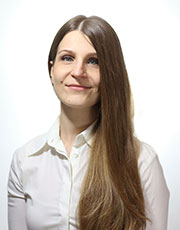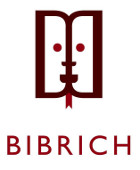13. 7. 2018.
 Dr. sc. Mikołaj Deckert docent je na Odsjeku za znanost o prevođenju Instituta za anglistiku Sveučilišta u Łódźu, Poljska. Njegovi istraživački interesi obuhvaćaju prijevode, jezik i kogniciju, diskurs u različitim medijima, lingvističku pragmatiku, kao i korspusnu lingvistiku. Autor je monografije Meaning in Subtitling: Toward a Contrastive Cognitive Semantic Model (2013) is suurednik nakladničkoga niza posvećenoga poučavanju prevođenja i audovizualne tehnologije. Dr. sc. Mikołaj Deckert docent je na Odsjeku za znanost o prevođenju Instituta za anglistiku Sveučilišta u Łódźu, Poljska. Njegovi istraživački interesi obuhvaćaju prijevode, jezik i kogniciju, diskurs u različitim medijima, lingvističku pragmatiku, kao i korspusnu lingvistiku. Autor je monografije Meaning in Subtitling: Toward a Contrastive Cognitive Semantic Model (2013) is suurednik nakladničkoga niza posvećenoga poučavanju prevođenja i audovizualne tehnologije. |
| Cognition and translation: The “audience type” parameter Sažetak: In this talk the general aim is to highlight the productivity of integrating constructs from cognitive psychology into translation research (cf. e.g. Ferreira & Schwieter 2015; Hubscher-Davidson 2017). To that end, I will discuss a set of experimental translational studies on how visual stimuli are processed in film. More specifically, the central question of the talk is about the extent to which attention allocation in different audience types overlaps. This will be examined by looking into processing in individuals who merely watch translated audiovisual material (the “mere viewer” type) and individuals who are required to additionally translate the verbal component in that material (the “translator-viewer” type). The focus is on what can be termed “visual verbal coding” (VVC), i.e. textual information retrievable from the film’s image. The cases of VVC used here are special in that they are not prototypically “ostensive” (cf. Sperber & Wilson 1995). Rather, their ostensiveness is “liminal” as the stimuli do not explicitly draw attention to themselves, for instance because they are backgrounded or because competing (visual) stimuli, possibly more salient ones, are available simultaneously. I will concentrate on two main aspects of liminal VVC across the “mere viewer” and “translator-viewer” groups: a) whether those stimuli are identified by viewers, and b) whether viewers are convinced those stimuli should be translated. The experimental findings will serve as a starting point for the discussion on the depth of processing in varied audience types which can be further categorised along a range of characteristics such as age and education, as well as individual differences. References Translation and transfer in children’s literature: The Croatian perspective. Part II – Future prospects. Kolokvij u organizaciji projekta BIBRICH. Zagreb: Učiteljski fakultet. |
7. 7. 2018.
 Prof. dr. sc. Jan Van Coillie, profesor je emeritus, na Fakultetu humanističkih znanosti Katoličkoga sveučilišta u Leuvenu, Belgija, gdje je predavao primijenjenu lingvistiku, dječju književnost i prevođenje dječje književnosti. Od 1999. do 2006. bio je voditelj belgijskoga Nacionalnoga centra za dječju književnost. Objavljuje radove iz područja istraživanja dječje književnosti, osobito dječjega pjesništva, bajke, povijesti dječje književnosti, prevođenja dječje književnosti, djeteta, čitanja i digitalnih medija. Od 1999. do 2004. bio je glavni urednik Enciklopedije književnosti za mladež (Encyclopedie van de jeugdliteratuur), a od 2006. suurednik je Leksikona književnosti za mladež (Lexicon van de jeugdliteratuur). Aktivan je kao književni kritičar, dječji pjesnik i prevoditelj slikovnica. Prof. dr. sc. Jan Van Coillie, profesor je emeritus, na Fakultetu humanističkih znanosti Katoličkoga sveučilišta u Leuvenu, Belgija, gdje je predavao primijenjenu lingvistiku, dječju književnost i prevođenje dječje književnosti. Od 1999. do 2006. bio je voditelj belgijskoga Nacionalnoga centra za dječju književnost. Objavljuje radove iz područja istraživanja dječje književnosti, osobito dječjega pjesništva, bajke, povijesti dječje književnosti, prevođenja dječje književnosti, djeteta, čitanja i digitalnih medija. Od 1999. do 2004. bio je glavni urednik Enciklopedije književnosti za mladež (Encyclopedie van de jeugdliteratuur), a od 2006. suurednik je Leksikona književnosti za mladež (Lexicon van de jeugdliteratuur). Aktivan je kao književni kritičar, dječji pjesnik i prevoditelj slikovnica. |
| Mirror, mirror on the wall / Who translates best of all? The magic of fairy tales for translation scholars Sažetak: We all remember fairy tales; they have been told for centuries and are still immensely popular. Each culture has its own tradition, but fairy tales also very easily cross borders. They belong to the most often translated, retranslated and adapted literary texts. Moreover, as “written folklore”, they are still being retold, rewritten, parodied, etc. All this makes fairy tales most interesting material for translation scholars. What is more, because most fairy tale books contain illustrations, they offer excellent examples for studying the “translation” of text into images. The talk consists of two parts. In the first, I present a model for a comparative analysis of fairy tales in translation. I show how the model works by analysing four translations of one particular fairy tale by the brothers Grimm. In the second part, I dive into the fascinating world of fairy-tale illustrations. With lots of colourful examples, I demonstrate how illustrating is in fact a special form of translating. Translation and transfer in children’s literature: The Croatian perspective. Part I – Breaking the path. Kolokvij u organizaciji projekta BIBRICH. Zagreb: Učiteljski fakultet. |
7. 7. 2018.
 Dr. sc. Anne Ketola predaje Znanost o prevođenju na Sveučilištu u Tampereu, Finska. Istražuje višemodalnost u prijevodima te prevođenje dječje književnosti, osobito slikovnca. Suautorica je studije Translating Picturebooks. Revoicing the Verbal, the Visual and the Aural or a Child Audience (Routledge, 2018, u suautorstvu s Riittom Oittinen i Melissom Garavini). Anne Ketola je također pokrenula nagradu „Aarresaari“ [Otok s blagom] za prijevode dječje književnosti koja se u Finskoj dodjeljuje svake druge godine za izvrsni prijevod knjige namijenjene dječjoj čitateljskoj publici, a sudjeluje i u odboru za dodjelu te nagrade. Dr. sc. Anne Ketola predaje Znanost o prevođenju na Sveučilištu u Tampereu, Finska. Istražuje višemodalnost u prijevodima te prevođenje dječje književnosti, osobito slikovnca. Suautorica je studije Translating Picturebooks. Revoicing the Verbal, the Visual and the Aural or a Child Audience (Routledge, 2018, u suautorstvu s Riittom Oittinen i Melissom Garavini). Anne Ketola je također pokrenula nagradu „Aarresaari“ [Otok s blagom] za prijevode dječje književnosti koja se u Finskoj dodjeljuje svake druge godine za izvrsni prijevod knjige namijenjene dječjoj čitateljskoj publici, a sudjeluje i u odboru za dodjelu te nagrade. |
|
Translating and transcreating picturebooks: Negotiating the verbal and the visual
Sažetak: Picturebooks operate on the interface of two different forms of storytelling, the verbal and the visual. Their messages are created in an intimate interaction of words and images, which combine into new conceptual entities by complementing and challenging each other. The process of translating these artifacts from one language to another is a highly creative enterprise, requiring translation solutions that may radically diverge from the traditional standards of translation practice. In fact, as concluded by, for instance, Di Giovanni (2008), the term translation does not always fully account for the transfer of multimodal messages from one language and culture to another. Therefore, some translation scholars now employ the term transcreation – merging translation and (re)creation – to describe processes of transfer which call for extensive adaptations of verbal material in order to create multimodally coherent products for a new target audience. The process of transcreation produces solutions that are “variable, non-uniform and at times non-predictable” (O’Hagan & Mangiron 2013: 106), at least when examined from a verbally informed perspective. References Translation and transfer in children’s literature: The Croatian perspective. Part I – Breaking the path. Kolokvij u organizaciji projekta BIBRICH. Zagreb: Učiteljski fakultet. |
23. 2. 2018.
 Prof. dr. sc. Kaisa Koskinen, predaje na Fakultetu za jezik, prevođenje i književnost Sveučilišta u Tampereu, Finska. Pročitajte više! Prof. dr. sc. Kaisa Koskinen, predaje na Fakultetu za jezik, prevođenje i književnost Sveučilišta u Tampereu, Finska. Pročitajte više! |
|
Retranslating children’s literature (looking at the cases of Alice in Wonderland and Pippi Långstrump into Finnish) Retranslations. Kolokvij u organizaciji projekta BIBRICH. Zagreb: Učiteljski fakultet. |
20. 5. 2017.
 Prof. dr. sc. Nike Kocijančič Pokorn, redovita profesorica na Odjelu za prevođenje Filozofskoga fakulteta Sveučilišta u Ljubljani, Slovenija. Pročitajte više! Prof. dr. sc. Nike Kocijančič Pokorn, redovita profesorica na Odjelu za prevođenje Filozofskoga fakulteta Sveučilišta u Ljubljani, Slovenija. Pročitajte više! |
|
Who Are the Real Guardians of the Target Text? Translators and their editors Post-Socialist Translation Studies. Kolokvij u organizaciji projekta BIBRICH. Zagreb: Učiteljski fakultet. |




